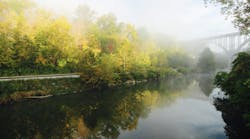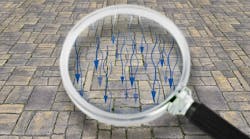About the author:
Derek Berg is regional regulatory director for Contech Engineered Solutions. Berg can be reached at [email protected].
I would consider myself a big picture thinker, always seeking to understand the full story, including the whys and hows of a given situation. I also like to probe below the surface and get my head around the root of a problem since that is where the lasting solutions are usually found.
When I look around the full breadth of the storm water landscape, I often find myself frustrated with the proliferation of assumptions and policies from one program to another with little regard for whether they were appropriate in the first place or are likely to impart meaningful water quality improvement. Once something appears in a BMP manual or on the website of a credible regulatory program, it is bound to show up in many others in the years that follow. Cut and paste policy adoption is certainly not a new problem in storm water, but maybe it is time we try to kick the habit.
I cannot even count the number of times that I have asked members of the regulatory community why a given policy or standard was being rigidly applied and was told that they have no choice because it is in their manual, so that is how they have to do it.
Unfortunately, the issue is often further complicated by the fact that many of the people implementing the policies in their manuals and guidance documents did not play a direct role in drafting them. This tends to create knowledge gaps and limited understanding of why specific criteria exist or whether they even make sense. I certainly sympathize with the fact that the regulatory community is usually doing the best they can to keep their programs afloat with limited staff and funding, but I think we could all move the ball further up the field if we took a step back from time to time to think about the big picture. If language was cut from one BMP manual and pasted into another under the premise that it is good enough for them so it is good enough for us, is that really the best approach for local water quality concerns or advancing the state of the art?
In recent years, the next generation of storm water policies and BMP manuals has emerged in various parts of the country. There is a clear shift in attention away from ponds and pipes to put the spotlight on runoff reduction and green infrastructure practices. There is nothing wrong with that on the surface, but many programs are implementing standards that have already been called into question by more recent research or proven overly rigid by those who have adopted them earlier. For example, we continue to assume bioretention cells are a superior means of retaining phosphorus when a growing list of studies from around the country shows they commonly act as net exporters of nutrients.
Equally prevalent is language that assumes storm water can be managed entirely through runoff reduction without any clear pathway to viable and effective flow through solutions for the numerous sites where runoff reduction alone simply is not feasible.
Storm water is still a dynamic field, so we need to find a way to close the gap between the science and policy. Given that BMP manuals and local policies often are in place for years between substantive updates, it would seem prudent that when we do get around to updating them, we take a collective step back to really assess the state of the art and do everything possible to implement standards that genuinely advance the practice. National storm water rules were written to give local programs the flexibility to innovate based on their impairments and unique local conditions, so we should not toss that opportunity away in favor of something quick and easy. After all, I think there might be a saying or two about where the easy road typically leads.


